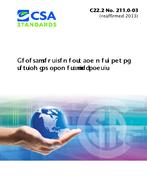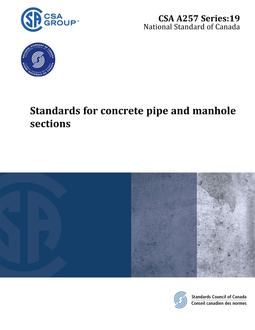Preface
This is the sixth edition of ANSI Z21.88 – CSA 2.33, Vented gas fireplace heaters. It supersedes the previous editions published in 2009, 2005, 2002, 2000, and 1998.
Scope
1.1 This Standard applies to newly produced vented gas fireplace heaters (see Clause 3, Definitions), hereinafter referred to as appliance(s), constructed entirely of new, unused parts and materials, and having input ratings up to and including 400,000 Btu/hr (117 228 W); a) for use with natural gas; b) for use with liquefied petroleum (propane); c) direct vent appliances for manufactured home (USA only) or mobile home OEM installation convertible for use with natural gas and propane when provision is made for simple conversion from one gas to the other [see Clause 4.1.4a) and (b)]; d) direct vent appliances for manufactured home (USA only) or mobile home aftermarket installation for use with natural gas only or liquefied petroleum (propane) gases only [see Clause 4.1.4b)]; e) direct vent appliances for recreational vehicle installation for use with liquefied petroleum (propane) gases only [see Clause 4.1.4c)]; f) direct vent appliances for recreational vehicle installation only convertible for use with natural gas and liquefied petroleum (propane) gases when provision is made for the simple conversion from one gas to the other [see Clause 4.1.4c)]; and g) for direct vent appliances for manufactured home (USA only) or mobile home OEM installation for use with liquefied petroleum (propane) gases only [see Clause 4.1.4a)]. The construction of vented gas fireplace heaters and vented gas fireplace heaters with cooling units for use with the above-mentioned gases is covered under Clause 4, Construction. The performance of vented gas fireplace heaters and vented gas fireplace heaters with cooling units for use with the above-mentioned gases is covered under Clause 5, Performance. 1.2 Annex A, Automatic intermittent pilot ignition systems for field installation, includes provisions for newly produced (optional) automatic intermittent pilot ignition systems (see Clause 3, Definitions), constructed entirely of new, unused parts and materials, to be adapted in the field to an appliance equipped with an existing continuous pilot burner and which has been examined and tested for compliance with this Standard when installed on the appliance. 1.3 If a value for measurement given in this standard is followed by an equivalent value in other units, the first stated value is to be regarded as the specification. 1.4 All references to “psi” throughout this Standard are to be considered gauge pressures, unless otherwise specified. 1.5 Appliances covered by this Standard, except for those installed in recreational vehicles, are those whose efficiencies are regulated in the United States by the Energy Policy and Conservation Act of 1975 and the National Energy Conservation Policy Act of 1978* or covered in Canada by Clause 8, Items unique to Canada. * At the time of this printing, the above acts regulate the thermal efficiency (heating capacity) of vented appliances. For information, contact the U.S. Department of Energy, Conservation and Solar Applications, Consumer Products Efficiency Branch, 20 Massachusetts Avenue, N.W., Washington, DC 20545. 1.6 Clause 7, Items unique to the United States, contains provisions that are unique to the United States. 1.7 Clause 8, Items unique to Canada, contains provisions that are unique to Canada. 1.8 This Standard also applies to appliances with draft hoods which are factory-equipped with automatic vent damper devices (see Clause 3, Definitions), hereinafter referred to as vent damper devices. 1.9 Special construction provisions applicable to vented gas fireplace heaters designed for use with an optional design-certified conversion kit are outlined under Annex B, Provisions for listed gas appliance conversion kits (optional). 1.10 Clause 2, Reference publications, contains a list of standards specifically referenced in this Standard and sources from which they may be obtained. 1.11 In this Standard, “shall” is used to express a requirement, i.e., a provision that the user shall satisfy in order to comply with the standard; “should” is used to express a recommendation or that which is advised but not required; and “may” is used to express an option or that which is permissible within the limits of the standard. Notes accompanying clauses do not include requirements or alternative requirements; the purpose of a note accompanying a clause is to separate from the text explanatory or informative material. Notes to tables and figures are considered part of the table or figure and may be written as requirements. Annexes are designated normative (mandatory) or informative (non-mandatory) to define their application.
Product Details
- Edition:
- 6th
- Published:
- 02/01/2014
- ISBN(s):
- 9781771395885
- Number of Pages:
- 242
- File Size:
- 1 file , 14 MB
- Product Code(s):
- 2422785, 2422785, 2422785


